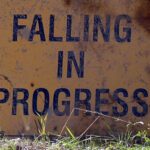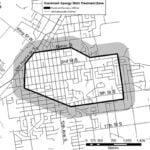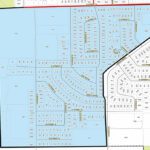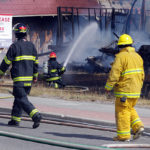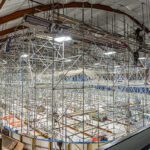Home »

Restoring ecosystems in the Rocky Mountain Trench
Faces & Places: Marc Trudeau
By Nicole Trigg
Kootenay Conservation Program
It’s been two years since Marc Trudeau took the helm of the Rocky Mountain Trench Natural Resources Society, replacing long-term coordinator Dan Murphy.
A registered forest technician with a background in forestry and wildfire, Marc brings passion and knowledge to the role, evidenced by the Trench Society’s success in securing a Canada Nature Fund grant in 2019 in a joint application led by the Aq’am First Nation and in partnership with the Tobacco Plains First Nation.
The Canada Nature Fund grant commits a total of just over $650,000 to the three proponents over two years, and each co-applicant has projects planned for their respective area.

“It was certainly a great announcement for us,” said Marc. “The focus is geared towards dry, upland forest and grasslands, because Aq’am Lands, Tobacco Plains Lands and the Rocky Mountain Trench Ecosystem project areas fall into that open forest grassland ecosystem that historically was maintained through low intensity forest fires or First Nations fire on the land base.”
A coalition of nine East Kootenay not-for-profits, the Trench Society was created in 1996 and is a founding member of the Rocky Mountain Trench Ecosystem Restoration Program (or ER Program), which has been working to restore grassland and open forest on Crown land in the East Kootenay/Upper Columbia Valley region of southeastern British Columbia.
The ER Program is governed by a steering committee that’s a partnership of government, industry, First Nations and non-government agencies (including the Trench Society), which oversees an area encompassing 110,000 hectares from Radium Hot Springs in the north to the Canada-U.S. border in the south. Given this massive land base, the ER Program’s goal since 2014 has been to manage 65,000 ha of core grasslands within these geographical boundaries.
For the Canada Nature Fund grant, the Trench Society is focusing on a large Crown land piece known as Indian Springs Pasture, which is located directly adjacent to the Cranbrook airport going north, and ties into the border of the Aq’am reserve.
“Our project targets areas where we have significant in-growth of forests that we want to mitigate by applying some thinning to open up the forest to open forest standards in a logical burn unit. That’s going to be done through manual work with hopefully a final treatment being prescribed fire on the land base,” said Marc.
Year one of the funding will cover planning for prescription and setting up monitoring plans. For year two, most of the funds will go toward manual treatments that will prepare the land base for prescribed fire (the latter not covered by the federal grant).
“The reason we’re doing these sorts of projects is that there are so many species that are dependent on open forests and grasslands. The species at risk we’re trying to target are American badger, Long-billed Curlew and Lewis’s Woodpecker. There is an array of plants as well. Basically, the goal is to restore their habitats the best we can… In a lot of ways, this is tying into the Kootenay Connect work.”
Led by KCP, Kootenay Connect was the only other project in B.C. to be awarded a Canada Nature Fund grant in 2019. Kootenay Connect focuses on species at risk conservation in four key wildlife corridors in the Kootenays, one being the Wycliffe Wildlife Corridor, which is located near the Trench Society’s project area.
“We see other pressures on the land base that weren’t there 20 years ago. We’re seeing more recreationalists out there on the ground, we’re seeing increases in invasive plants, and we have catastrophic wildfires happening that are changing the landscape and not in a good way,” said Marc. “When fires happen in in-growth forest, those aren’t low intensity fires. Those are high combustion stand-changing events that deplete all the goodness that comes out of an open forest.”
Originally from Winnipeg, Marc graduated with a Diploma in Integrated Forest Resource Management from Lakehead University in Thunder Bay, Ontario in 1997. There he began his career in logging and silviculture, before moving to the Kootenays in 2000, first working in forestry consulting then joining the BC Wildfire Service as an initial attack crew leader. In 2018 he stepped into the role of Trench Society Coordinator.
“The effort that we’re putting in right now is to try and manage and maintain these larger landscape level areas that provide resiliency as time goes on. We know that an open forest system that’s healthy will be more resilient as the climate changes over time.”
To learn more about the ER Program, visit: https://trench-er.com
To learn more about the organizations that make up the Trench Society, see the links below:
Cranbrook Community Forest Society
East Kootenay Invasive Plant Species Council
East Kootenay Wildlife Association
Kootenay Livestock Association
Southern Guides & Outfitters Association
Waldo Stockbreeders Livestock Association
Windermere District Farmers Institute
The Kootenay Conservation Program is a broad partnership of over 80 organizations from across the Kootenays that works to conserve landscapes in order to sustain naturally functioning ecosystems. Learn more at www.kootenayconservation.ca.
Images submitted by Kootenay Conservation Program
